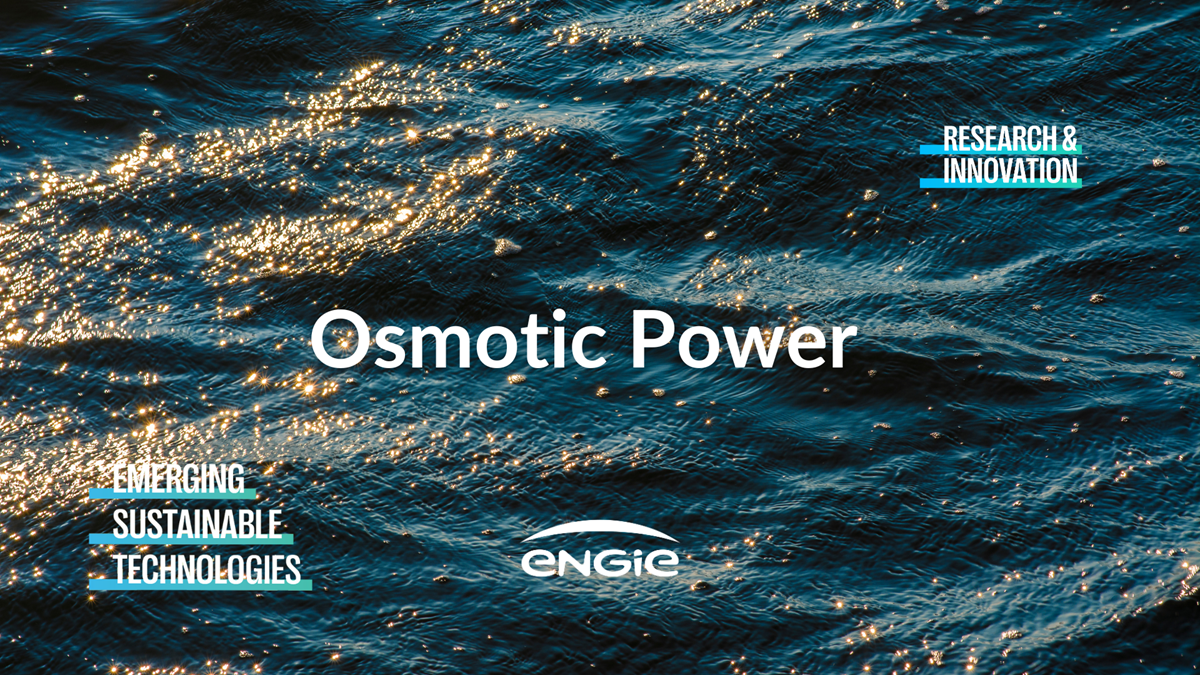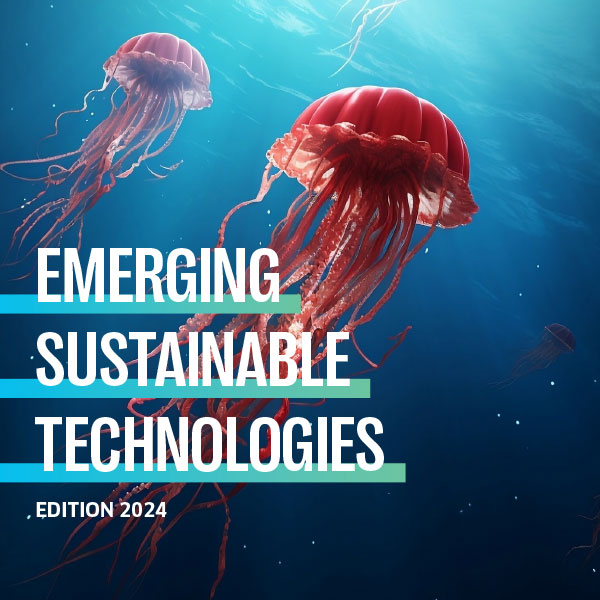"Osmotic power is the power produced when fresh water moves from a solution of lower concentration (feed) to a solution of higher concentration (draw solution) across a semipermeable membrane" according to Giwa & Hasan (2019)
Salinity gradient power generation is a renewable energy source available 24 hours a day. It is therefore complementary to more variable sources of energy like wind, wave, and solar.

Among the different methods to capture osmotic power, pressure retarded osmosis (PRO) and reverse electrodialysis (RED) are in advanced development stages:
- Pressure Retarded Osmosis (PRO): Works by allowing fresh water from one container to pass through the semi-permeable membrane separating it from the salt water in another container, thereby reducing the salt concentration in the latter. The increase in pressure in the saltwater container generates mechanical energy by driving a turbine.
- Reversed ElectroDialysis (RED): Works with stacked membranes that distinguish between positive salt ions (Na+) and negative salt ions (Cl-). Under the effect of osmosis, the former pass through cation-selective membranes, while the latter pass through anion-selective membranes. The separation of positive and negative charges produces an ionic current, which is then converted into an electric current.
Applications of the technology
- Standalone plants: in estuaries or deltas where freshwater rivers run into the sea;
- Hybrid energy generation: processes recovering energy from high salinity waste streams;
- Desalination: bi-product of osmotic pressure. Separation process used to reduce the dissolved salt content of saline water to a usable level.
Emerging technologies rely mainly on the RED process & nanopore-based membranes and also PRO process & membrane free technologies.
Good to know: Coupling osmotic power & desalination contributes to the decarbonization of the desalination process by increasing its energy efficiency and recovering renewable electrical energy & raw materials from brine.
Discover the advantages, challenges, environmental analysis & social acceptability of these technologies (and many more) in ENGIE’s report on Sustainable Emerging Technologies.
Current main pilot & demonstration projects are located in Europe
Contributions and Acknowledgments:
- Fiona Buckley (Laborelec);
- Benjamin Graff (CNR),
- Vincent Piron (CNR)
- Elodie du Fornel,
- Elodie Le Cadre Loret,
- Jan Mertens,
- Jean-Pierre Keustermans,
- Céline Denis,
- Olivier Sala


